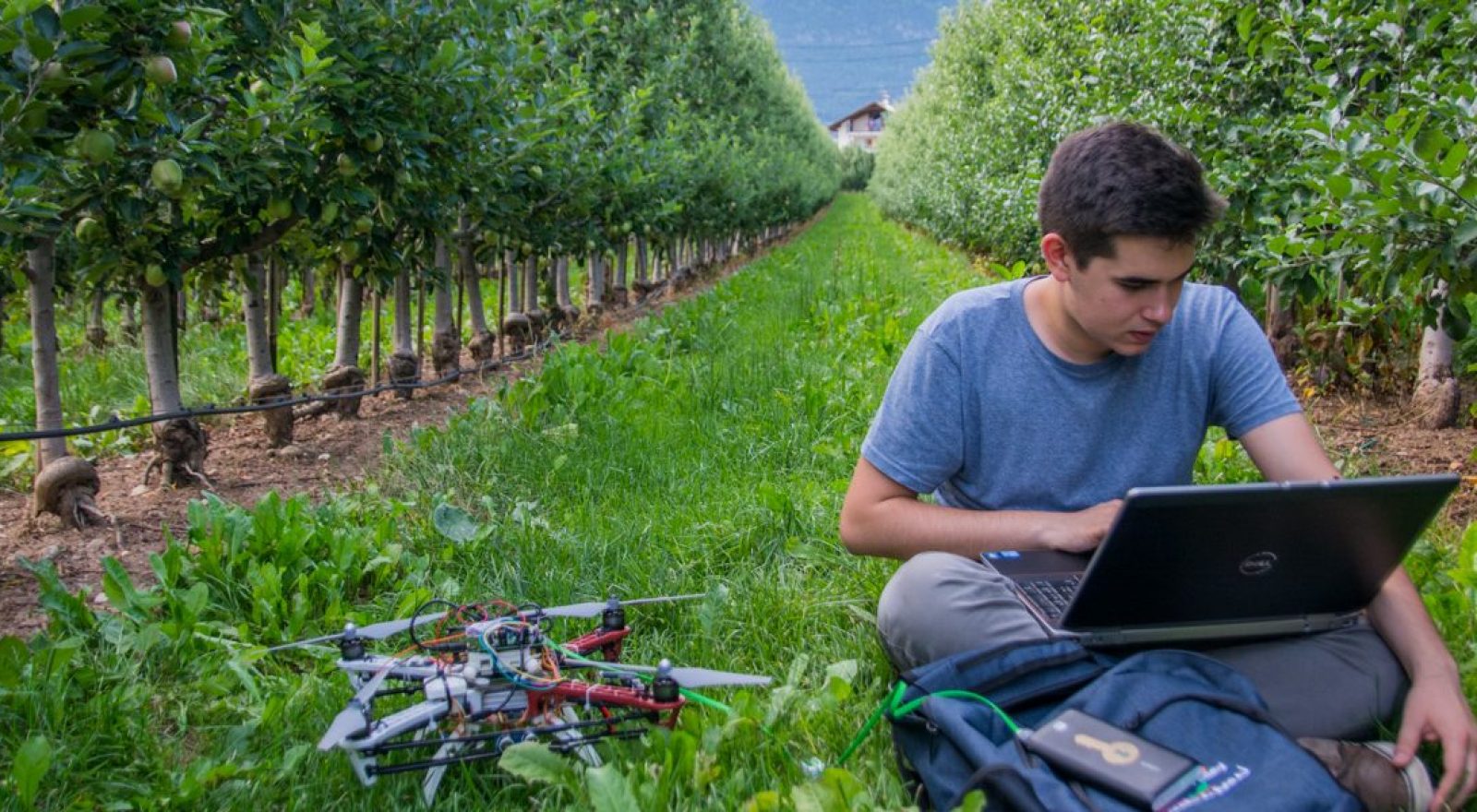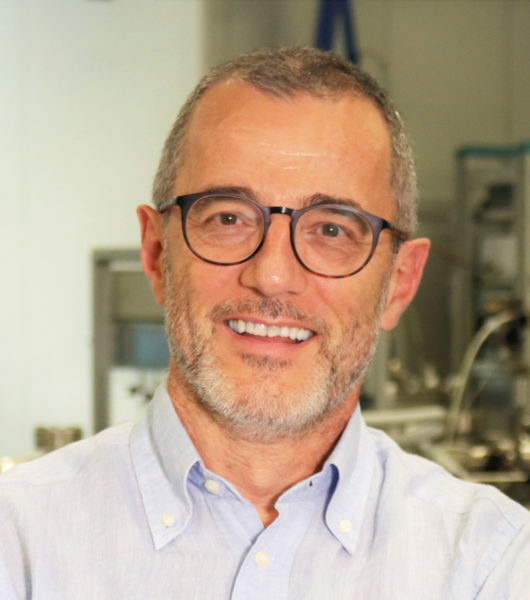FBK and School Activities – A New Integrated Teaching Aapproach
The event with the participation of the students to be held on Thursday, December 6 at the Santa Chiara Auditorium in Trento
The event with the participation of the students to be held on Thursday, December 6 at the Santa Chiara Auditorium in Trento
The results of the “SenSAT” project for safety in mountain lodges, the play on “The city of electrons” and the launch of the “cheAria” initiative for urban environmental monitoring on means of transportation, such as bicycles.
The event scheduled for Thursday, December 6, at the Santa Chiara Auditorium in Trento, will reunite the students of the schools of Trentino-South Tyrol that participate in the Alternating School and Work Program projects completed under the coordination of Fondazione Bruno Kessler and that are part of a new integrated school-work teaching approach, called DomoSens, for the development of technology innovation.
Project coordinators Pierluigi Bellutti (FBK – Micro nano Facility) and Claudia Dolci (FBK – Research and Innovation for Schools Unit) will introduce the work at 9.15 am. The practical demonstration of actually working sensors that were made during the past school year as part of SenSAT, the project dedicated to air quality in SAT-run mountain lodges. Also, the exhibition of models and sensor projects created by the Vittoria High School of Trento has been set up in the foyer of the theater.
At 10.45 am, the show “The adventures of electron Steve. From the remote prairie to the chaotic metropolis” will be staged: an original work realized by the students of the Maffei School of Riva del Garda, with the collaboration of Andrea Brunello, it is a part of the of the science communication project called “the City of electrons”. The representatives of the local institutions and organizations that have helped complete the projects, i.e. the PAT Knowledge Department, IPRASE, the Caritro Foundation, and SAT then gave talks.
“The element that lies behind these projects, and those that will be proposed in the future”, Pierluigi Bellutti explained, “is the adoption of an original teaching approach developed by FBK called DomoSens. It is an integrated school-work approach that is being refined precisely thanks to collaboration with schools. In this way, all the participants become active and proactive. The distinctive elements of the DomoSens approach are discovery, which comes from the world of research, invention, enabled by technology, the innovation of methodologies and products, and the market, as a vehicle for conveying the product and transforming it into economic value, also construed as jobs. An integrated laboratory is created that allows for the experimentation of teamwork, the involvement of a large student community, training in contact with cutting-edge research and an opportunity for teachers to bring themselves up to date. With the new cheAria project, created in cooperation with the Environmental Protection Agency of the Autonomous Province of Trento, we are entering a phase of consolidation and possible extension at national level of the DomoSens model”.
The event will also be an opportunity to present the first issue of a series called “QUADERNI DI SCUOLA“, published by FBK Press, which will collect all projects completed following the DomoSens model both locally and nationally, where it is intended to extend the experience.
The meeting on Thursday, December 6, will be attended by the students of the high schools that have joined the projects: “L. Guetti” (Tione), “M. Curie” (Pergine), “M. Martini” (Mezzolombardo), Rainerum Institute (Bozen), “Tambosi” (Trento), “G. Marconi”(Rovereto), “M. Buonarroti-Pozzo” (Trento), “A. Maffei” (Riva del Garda), “A. Vittoria” (Trento), “F. Depero” (Rovereto), “G. Prati”(Trento), “G. Galilei” (Trento).
Please find the program at this link.
Projects (by FBK – Research and Innovation for Schools Unit)
SenSAT
The “SenSAT” project has set itself the objective of creating an integrated solution for the safety of Alpine mountain lodges with elements capable of composing a distributed intelligent control network. It is therefore an experience that can falls under the IoT applications in the Smart City area, or better, in this case, under the Smart Land area.
During the project, structured by simulating a company composed of its own specialist divisions, the elements of a typical innovation chain were approached, involving legal aspects, market context, business expectations (business plan), sensor construction, measurement tests, data transmission solution (network creation), design of the product to be installed and product certification aspects. Each company division has been associated with a school, keeping in mind their respective specializations. The project saw the participation of SAT, which allowed experimentation in the mountain lodges, and professional assistance from representatives of ADI (Industrial Design Association) for the design part, and CNF (National Forensic Council) for the issues connected to intellectual property protection and corporate structure of entrepreneurial initiatives, if applicable.
The city of electrons
The “The City of Electrons” project explores the possibility of overcoming the classical approach of teaching science in schools, proposing an approach that sees greater alignment among them. Thus, the aim is to make available, already in the fourth year of high school, knowledge that allows access to the understanding of complex phenomena. All this is in fact also an interdisciplinary effort exercise, whose experimentation supports the training of young people suited to enter a job market that is characterized by new production systems and social contexts intimately linked to cutting-edge technologies.
Starting from situations that are technologically advanced, real and experimentable by the students, we want to evaluate whether that natural interest widely shown by young people for technological innovations can become the driving force of an active participation, able to bring the students themselves to visualize complex concepts ad a level such that the comprehension of phenomena is reached and therefore easily transferable to others.
All this gained momentum when conducting the activities in the “gaseous sensor” sector in the other FBK projects for schools. The heart of the sensor is silicon, a semiconductor, and a semiconductor is as well the material sensitive to gas. From a teaching standpoint, finding the answer to the question “what is a semiconductor?” becomes critical. A rigorous answer requires knowledge in mathematics thata accessible to specialists only. A road can be taken, though, through notions already available in high schools relating to electrons, protons, atom nuclei, atoms and chemical bonds.
Starting from a university lesson on semiconductor held by prof. Bozio from the University of Padua, supported by the inputs on science communication offered by PLaNK! (science magazine of the “Accataglia” association from Padua), the schools got involved in an idea contest that gave substance to the project. The students, after having studied the new technical contents, have created an editorial product for their peers. One of these ideas has also become a play.
“CheAria” (starting up)
School-work experience project on air quality monitoring in Trento, Rovereto and Pergine, promoted and coordinated by FBK and joined by 10 schools in Trentino in cooperation with the Environmental Protection Agency of the Autonomous Province of Trento.
The project involves the study and development of prototypes of sensors that can be installed on means of transportation (for example bicycles) to monitor the environment, complete with recordings of position and time, that will provide data for a spatial-temporal analysis of air quality. In addition, there will be stations, one per city, integrated into the installation area hrough design solutions for street furniture, in agreement with City administrations complete with information boards for citizens.
The project addresses the following topics:
Education on new technologies
Teaching approach innovation: exploratory and planning teaching approach
Active citizenship: direct involvement of girls and boys (between 16 and 18 years old)
Environment: monitoring and mapping of air quality and air pollution
Technology: Smart Cities (micro-nanotechnologies integrated with new IoT technologies)
Objectives:
METHOD-RELATED: to consolifate a school-work model in which the students are the protagonists, together with tutor-like teachers
ENVIRONMENTAL: real-time mapping of air quality to monitor gas pollution in the city environment.
PARTICIPATION: active and participatory training on new technologies and air pollution; raising awareness in students on environment-related education issues, tackling monitoring aspects and involving them in data collection, validation and processing of results.
TECHNOLOGICAL: develop sensors and relating interconnection network for environmental monitoring, equipping the local area with fixed and mobile stations (installations on private vehicles and experiments on drones and airplanes).
TEACHER CONTINUING EDUCATION: specialist training of teachers involved in the project, with credit accrual.



